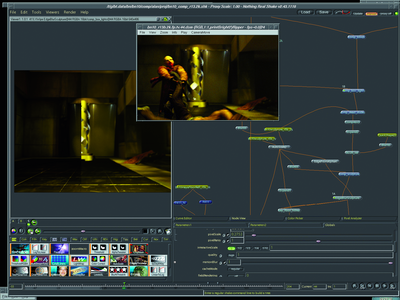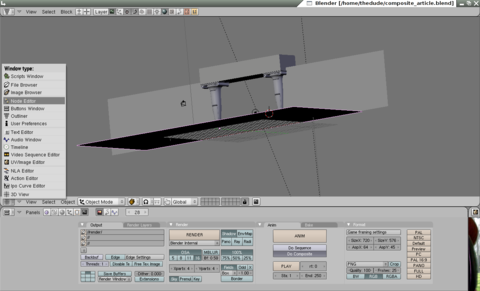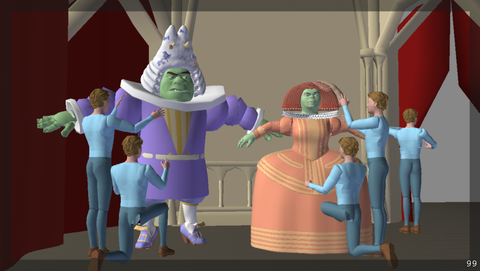|
Linux is bursting with multimedia potential—at least, that's the impression one gets from the plethora of multimedia-oriented distributions that have surfaced in recent years. DeMuDi, Planet CCRMA, Ubuntu Studio, 64 Studio and the list continues on ad infinitum. However, for many years now, the term multimedia proved deceptive. GIMP and Inkscape and other graphics tools meant that 2-D graphics were covered, and the astounding variety of audio tools available with real-time priority meant that users' needs for recording and audio processing were met. Video tools lagged behind, because video processing is both more difficult and more prone to patent encumbrance. In the last few years, things have begun to catch up to the point where it's feasible to create films or cartoons from concept through execution using only Linux tools. |
|
Linux is bursting with multimedia potential—at least, that's the impression one gets from the plethora of multimedia-oriented distributions that have surfaced in recent years. DeMuDi, Planet CCRMA, Ubuntu Studio, 64 Studio and the list continues on ad infinitum. However, for many years now, the term multimedia proved deceptive. GIMP and Inkscape and other graphics tools meant that 2-D graphics were covered, and the astounding variety of audio tools available with real-time priority meant that users' needs for recording and audio processing were met. Video tools lagged behind, because video processing is both more difficult and more prone to patent encumbrance. In the last few years, things have begun to catch up to the point where it's feasible to create films or cartoons from concept through execution using only Linux tools. |
|
All the big film studios primarily use Linux for animation and visual effects. Perhaps no commercial Linux installation is larger than DreamWorks Animation, with more than 1,000 Linux desktops and more than 3,000 server CPUs. “For Shrek 3, we will consume close to 20 million CPU render hours for the making of the film”, says DreamWorks Animation CTO Ed Leonard. “Each of our films continues to push the edge of what's possible, requiring more and more compute power.” Everyone knows Moore's Law predicts that compute power will double every one and a half years. A little known corollary is that feature cartoon animation CPU render hours will double every three years. In 2001, the original Shrek movie used about 5 million CPU render hours. In 2004, Shrek 2 used more than 10 million CPU render hours. And in 2007, Shrek 3 is using 20 million CPU render hours. |
 Video compositing software is used by motion picture studios to combine special effects or animation elements into film sequences. Compositing software may be thought of as doing for moving images what tools like the GIMP and Photoshop do for still images. Nothing Real's Shake seems to be the most widely used high-end compositing package today. Shake runs on Linux, Windows and IRIX, and Apple has just confirmed rumors that it has acquired Nothing Real and Shake. Tippett Studio specializes in scary effects, such as bugs and creatures. Let's visit Tippet Studio in Berkeley, California for a look at how they use Shake on Linux. |
 The Discreet Inferno system enables the world's top digital artists in broadcast facilities, post-production houses and film studios to deliver extraordinary moving imagery. This system contains a robust creative toolset for high-speed compositing, advanced graphics and interactive design. It has shaped blockbuster feature films and television programming - such as Harry Potter and the Goblet of Fire and CSI: Crime Scene Investigation, as well as numerous Super Bowl commercials and premium television channel branding. |

